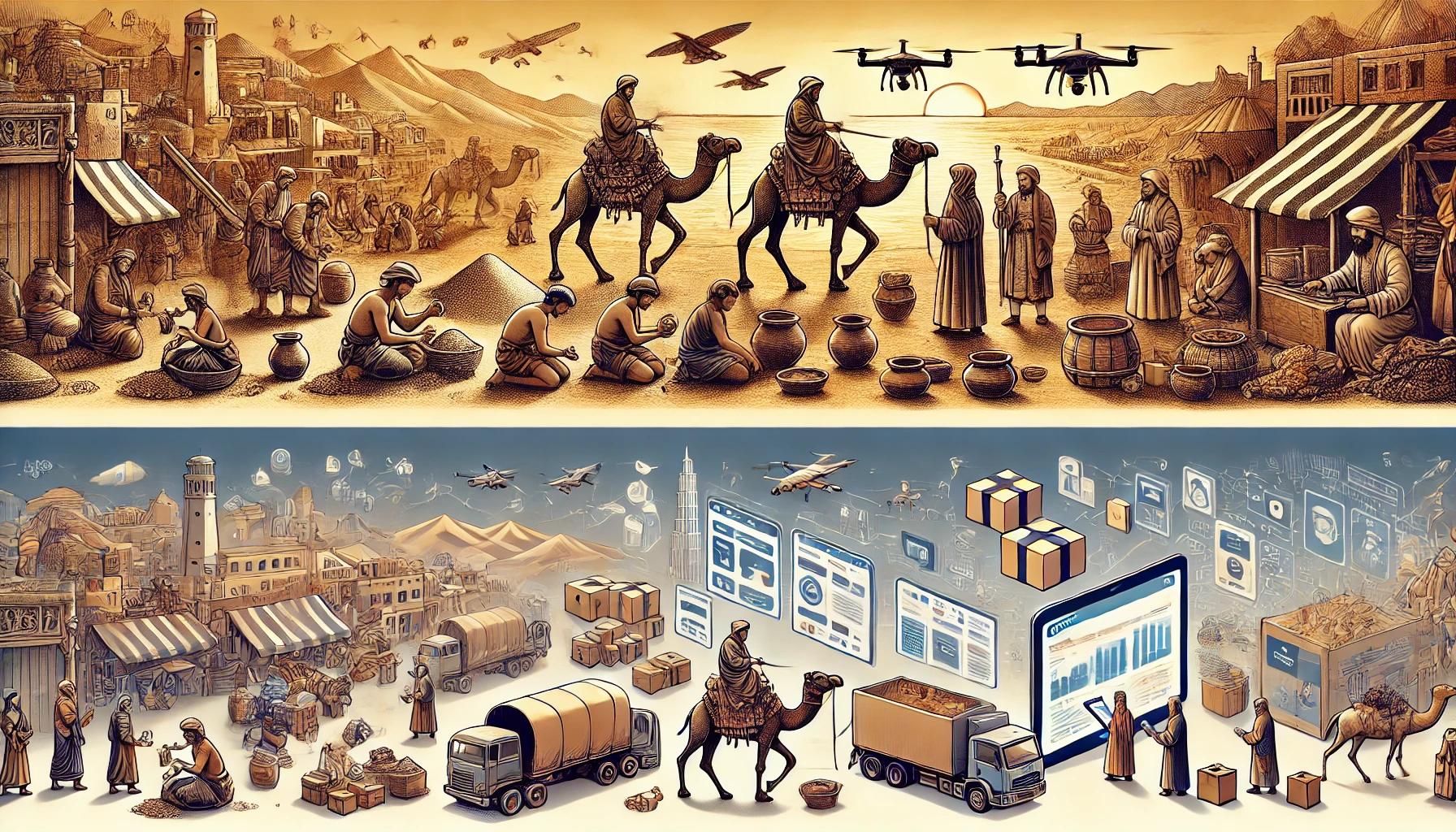History of Trade: From Ancient Times to Modern Commerce
Trade, as one of the oldest forms of economic activity, has played a crucial role in the development of human society. By studying its history, we can trace the evolution of economic, social, and cultural processes that shaped global civilizations. From bartering in primitive societies to global electronic platforms, trade has undergone significant changes, adapting to the needs and challenges of each era.
Ancient Forms of Trade
The earliest forms of trade emerged in the Neolithic era, when humans adopted a sedentary lifestyle. The primary form of exchange was bartering, where people traded goods directly without the use of money. Agricultural products, tools, and luxury items like shells and rare minerals were among the main goods exchanged. It is important to note that some ancient societies used unofficial units of value, such as grain or livestock, to facilitate trade .
Trade in the Ancient World: Intercivilizational Connections
In Antiquity, trade took on an international character. Some of the first trading civilizations were the Sumerians and Ancient Egypt. The Sumerians, thanks to their innovations in navigation and urban planning, created a complex trade network that extended beyond Mesopotamia to other regions. The ancient Egyptians maintained active trade relations with Nubia, the Mediterranean, and the Middle East .
One of the most significant trade routes of the ancient world was the Silk Road, which connected China with Europe. This route not only facilitated the movement of goods but also promoted cultural exchange between East and West. The Silk Road became the foundation for the trade of silk, spices, gemstones, and other luxury items .
The Middle Ages: The Resurgence of Trade
With the fall of the Roman Empire, trade in Europe declined, but by the 12th century, it experienced a revival. This period saw a new impetus for trade, driven by the growth of cities and the development of guilds. The Hanseatic League in Northern Europe played a crucial role, creating a trade union to protect its interests in the Baltic Sea. The Mediterranean basin, where Venice and Genoa became key trade hubs, was another important center of medieval commerce .
The Age of Exploration: The Era of Global Trade
With the discovery of new sea routes in the 15th and 16th centuries, the Age of Exploration began, radically changing trade routes and leading to the globalization of commerce. The Portuguese and Spanish were the first to explore and colonize new lands, establishing trade routes with the Americas, Africa, and Asia. Major trading companies, such as the East India Company, monopolized the international trade of spices and other goods.
This era also witnessed the rise of the colonial system, which left a lasting mark on history. The trade of humans — the slave trade — became a dark chapter of this time. Fortunately, by the 19th century, abolitionists' efforts led to the gradual end of slavery .
The Industrial Revolution: A New Phase in Trade
The 19th century brought another wave of change with the Industrial Revolution. The introduction of steam engines, railroads, and the telegraph dramatically sped up the movement of goods and information. Trade became mass-produced, and with the development of industry, it became possible to manufacture products in large quantities for mass consumption. This period also saw the rise of international trade agreements, which began to regulate the exchange of goods between countries .
Modern Trade: From Local Markets to the Global Economy
The 20th century brought even more changes to trade. The post-war era saw the formation of international organizations such as the World Trade Organization (WTO), the International Monetary Fund (IMF), and the World Bank. These organizations played a key role in establishing global trade rules and supporting economic stability at the international level.
Modern trade is inseparable from technological developments. E-commerce, which emerged in the late 20th century, radically changed the way we buy and sell goods. Today, companies can sell their products on global markets via the internet, and platforms like Amazon and Alibaba have become major players in the global trade arena .
Conclusion
Trade has come a long way from simple bartering to global electronic platforms. Throughout its development, it not only contributed to economic growth but also fostered cultural and social exchange between peoples. In the modern world, trade continues to play a crucial role, evolving with technological progress and global economic trends.
Sources:
- Whitehouse, D. "The History of Civilizations." — M., 1998.
- Lloyd, S. "Early Civilizations of the Near East." — M., 1999.
- Piper, T. "The Silk Road: Ancient Trade Routes." — M., 2005.
- Tate, P. "Medieval Europe: Economy and Culture." — Oxford, 2004.
- Platt, W. "The History of the Slave Trade." — New York, 1989.
- Hobsbawm, E. "The Age of Revolution." — London, 1962.
- King, K. "The Evolution of E-Commerce." — London, 2018.
- Prescott, D. "Global Trade and Globalization." — M., 2021.
